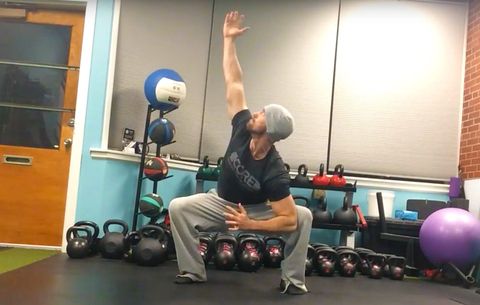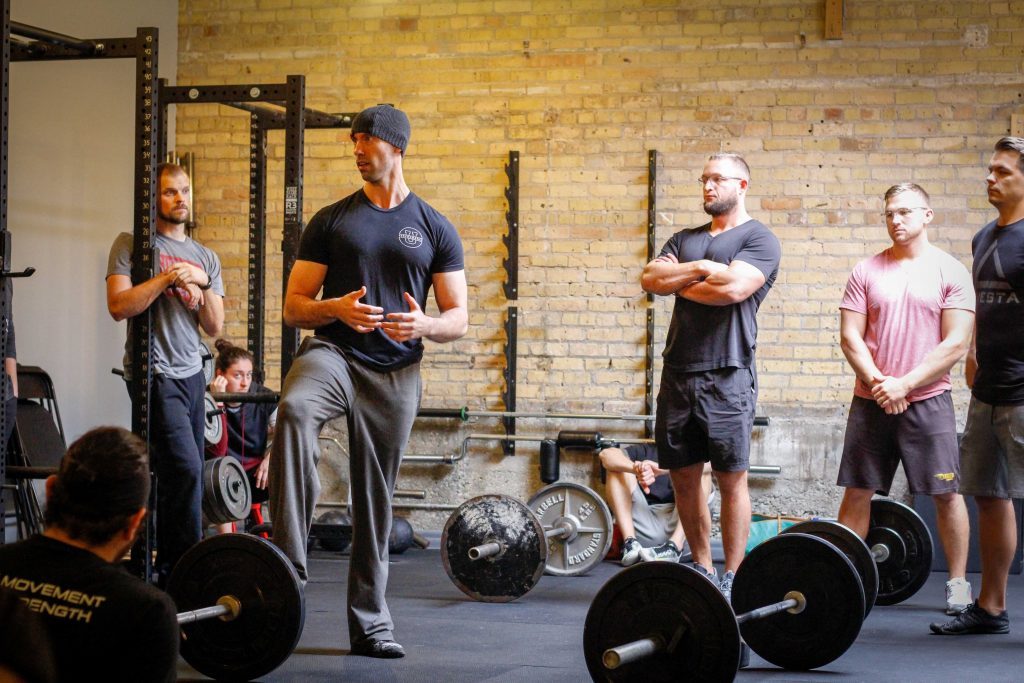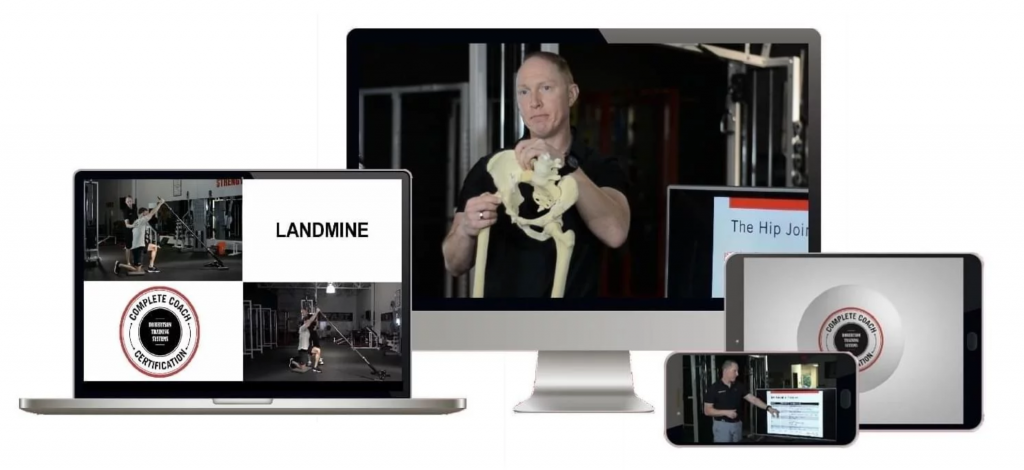4 Coaching and Program Design Digressions
Today is the last day you can purchase Mike Robertson’s latest resource, Complete Coach Certification, at a hefty discount.
Mike’s one of the best coaches I know, and if you’re at all affiliated with the fitness industry it would behoove you to consider investing in this awesome product. There’s so much more to being a coach than the x’s and o’s of program design, breaking down deadlift technique or, I don’t know, being able to draw the Kreb’s Cycle blindfolded.1
Those are all important of course, but what I appreciate about Mike’s approach the most is that he also covers more of the soft skills of coaching – being professional, saying people’s names, meeting clients where they’re at in terms of exercise selection, learning how to simplify your cues, wearing pants…you know, the usual.
In the spirit of that I thought I’d take some time to pontificate on a few components of coaching and program design that aren’t often discussed, are a bit off the beaten track, and are under-appreciated by the masses; digressions if you will.
HINT: Not on the list: kipping pull-ups.

Copyright: spotpoint74 / 123RF Stock Photo
Coaching & Program Design Digressions
1. Fillers Instead of Warming Up?
You know it, I know it, your mom’s second cousin’s Little League baseball coach’s sister knows it, everyone knows it…
…people always skip their warm-up prior to training.
Hell, [industry secret revealed] I skip my warm-up more than 50% of the time.2

Now, to back track a bit, I am not anti-warming up and I do advocate my clients and athletes do follow one.
I do write them in.
However, what I am not a fan of is the laundry list approach to warming-up.
You know what I mean: the warm-up that consists of a never-ending list – 10, 15, sometimes 20 exercises deep – of positional breathing, t-spine mobility, glute activation, and stretching drills.
I take a gander at something like that and am like…
I can only imagine what some of my clients in the past were like…
This is not an attempt to discount or demerit the importance of doing any of those drills mentioned above. I just know humans, and I know the vast majority of them would rather jump in front of a mack truck than do their warm-up.
Which is where the idea of “fillers” comes in.
These are nothing more than low-grade, low-intensity mobility or activation drills that are performed DURING the workout, typically during rest periods.
In short: It’s a sneaky way to put the shit that people need to work on in the program in a way that they’ll actually do it.
I’ve written about fillers in the past and how to best incorporate them depending on the main lift of the day:
- Fillers For the Deadlift
- Fillers For the Squat
- Fillers For the Bench Press
- Fillers For the 1-Arm Preacher Curl vs. Chains w/ a 3-3-1 Tempo Drop Set3
2. Underwhelm Them Early
This is a phrase I stole from Mike, but it mirrors much of what I do with all of my new clients. In the beginning all I am really concerned with is letting my clients marinate in the basics.
I want them to hinge, squat, push, pull, carry, and perform some single leg work.

Now what variation of all those things will depend on a multitude of factors: health & injury history, goals, ability level, not to mention their anatomy (anthropometry and leverages).
When all is said and done, though, from a programming standpoint, my clients should be underwhelmed. I want their programs to be mind-numbingly boring.
People need reps out of the gate, a lot of reps…of the same thing(s). That is the only way they’re going to learn and begin to “own” their movement.
What they don’t need is a bunch of novelty and a coach who’s only goal is to entertain them.
I can appreciate (and understand) that training should be fun and stimulating and fill everyone’s love tank to the ‘enth degree.
However, in my eyes, that needs to be earned via lots and lots and lots of repetition of the same shit.
No one ever got strong or mastered any exercise by constantly changing things up.
Wow your clients with customer service; underwhelm them with exercise selection.
3. Easy Training is Good Training
Keeping in tune with the whole “underwhelming them early” vibe, I’m a firm believer in the anecdote – astutely stolen from Dan John – that “easy training is good training.”

Put into other words: I’m less of a “holy shit I can’t feel the left side of my face, that workout was awesome” kinda guy and more of a “huh, I could totally do more, but [insert anything from going to see a movie and hanging out with your spouse to reading a book and drowning in kitty cuddles]” kinda guy.
See, I’d rather my clients/athletes leave a session feeling as if they could do more, maybe even wanting to do more, but don’t.
This is not to say “easy” training doesn’t involve some amount of effort or uncomfortableness; far from it. It is to say that pounding your clients into the ground every…single…session isn’t necessarily making them better or more resilient or whatever other cute adjective you want to toss in here.
There’s a common saying I’ve seen many other coaches use and it bears repeating:
“Your progress in the weight-room is directly correlated with how well you’re able to RECOVER from said workouts.”
This entails training with sub-maximal loads (65-80% of 1RM) more often in addition to other things such as encouraging more GGP/Zone 2 work (think: heart rate hovers in the 120 BPM range), sleep, calories to support one’s goals, and hydration to name a few.
4. Is It Necessary to De-Load Often?
It’s common practice for many gyms and trainers to use every fourth week as a rudimentary “deload week” (or a structured tempering of training volume, load, or both) for their clients and athletes.
It makes sense…especially when you consider billing cycles.
For example, to a large degree I still use this approach because every month my clients “re-up” their packages and I get to ding their credit cards in exchange for a freshly curated program.
But even then I have to take into consideration a few things.
- Training Frequency: someone who only trains 2x per week won’t necessarily do enough work to warrant a de-load as compared to someone who trains 4x per week.
. - Training Experience/Goals: someone who is working out for basic health or is a complete newbie will have a stark difference in approach to de-loading compared to someone training for a powerlifting meet or has more experience and is just stronger as a general observation. The former may go weeks without the need for any type of deload while the latter may be best suited for one every 3-4 weeks.
. - Life: Work, vacations, the beach, your slow-pitch softball schedule, your kid’s explosive diarrhea…all have a tendency of tossing us organic de-loads as it is. Oftentimes there’s no need to go out of my way to plan de-loads for some clients because “life” takes care of that anyway.
All of this doesn’t even get into the weeds on all the different types or ways to implement a de-load. I already touched on the idea of lowering one’s overall training volume or even intensity (personally I’m a fan of lowering volume but keeping intensity on the high(er) side of the spectrum, if not the same), but there are a bevy of other options too:
- Omitting compound movements in lieu of more isolation type movements (I.e., less axial loading).
- Going into full-on body-part-split-per day bodybuilder mode for a week or longer (<— this is fun).
- Reducing training frequency (instead of 5x per week, go with two).
- Get out of the gym entirely and partake in more outdoor activities.
For the Record: I’m very much a fan of people taking a full-week off from training – particularly if they’re consistent – 1x per year just to give themselves a break.
That said, I will sometimes push the boundaries with some of my clients and won’t implement an actual de-load until 1) I see a drastic decrease in their progress or performance on the gym floor 2) they’re eyes start bleeding or, you know, 3) they simply ask.
Often, especially if a client shows up to a session and they look like death, I’ll implement a de-load session, affectionately referred to as a Bloop, Bloop, Bloop workout.
HERE the idea is to listen to them, understand that, yes, life gets in the way sometimes, but to also not let them off the hook so easily.
They’re still going to workout and move – it just won’t involve working up to a heavy triple on their front squat.
Want More Pearls of Wisdom?
I’m a mere simulacrum compared to what Mike Robertson covers in his Complete Coach Certification.

I am not exaggerating when I say Mike covers everything as it relates to setting you up for as much success as possible as it relates to being a better, more well-rounded coach.
The only he doesn’t cover is making your meals for you.
TODAY (9/6) is the last day to take advantage of the discounted rate.
Get it here —> http://bit.ly/2lWGhpJ


